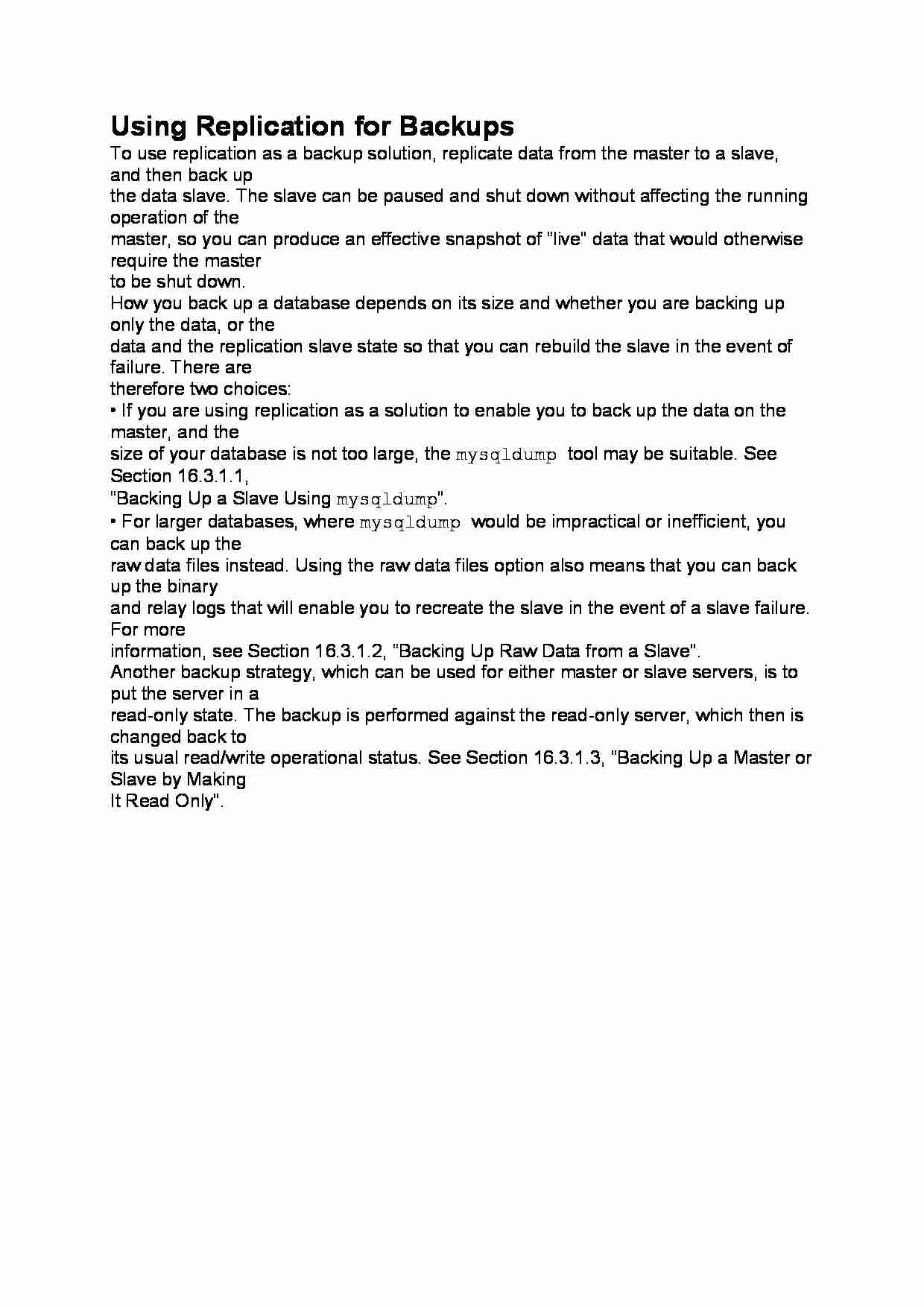
Using Replication for Backups
To use replication as a backup solution, replicate data from the master to a slave, and then back up
the data slave. The slave can be paused and shut down without affecting the running operation of the
master, so you can produce an effective snapshot of “live” data that would otherwise require the master
to be shut down.
How you back up a database depends on its size and whether you are backing up only the data, or the
data and the replication slave state so that you can rebuild the slave in the event of failure. There are
therefore two choices:
• If you are using replication as a solution to enable you to back up the data on the master, and the
size of your database is not too large, the mysqldump tool may be suitable. See Section 16.3.1.1,
“Backing Up a Slave Using mysqldump”.
• For larger databases, where mysqldump would be impractical or inefficient, you can back up the
raw data files instead. Using the raw data files option also means that you can back up the binary
and relay logs that will enable you to recreate the slave in the event of a slave failure. For more
information, see Section 16.3.1.2, “Backing Up Raw Data from a Slave”.
Another backup strategy, which can be used for either master or slave servers, is to put the server in a
read-only state. The backup is performed against the read-only server, which then is changed back to
its usual read/write operational status. See Section 16.3.1.3, “Backing Up a Master or Slave by Making
It Read Only”.
... zobacz całą notatkę



Komentarze użytkowników (0)